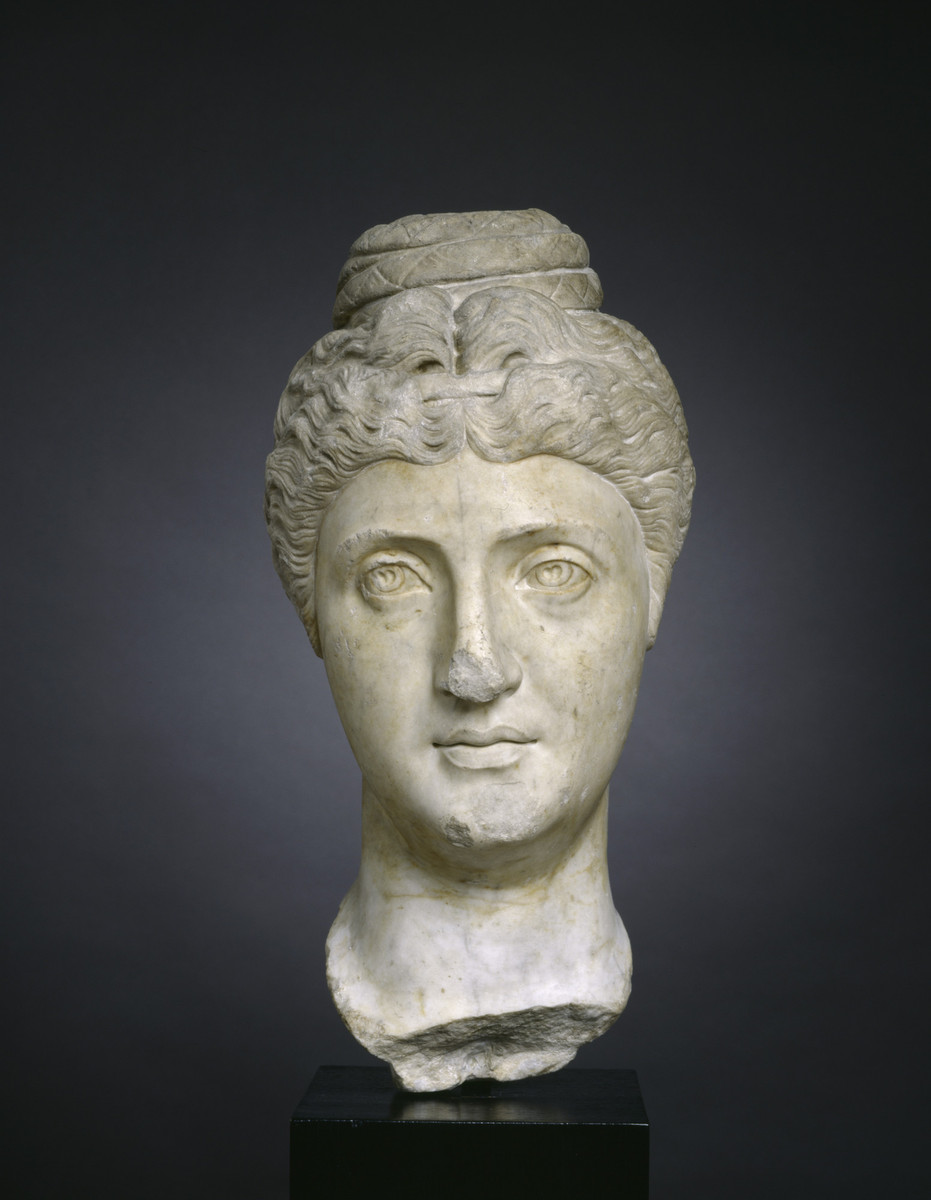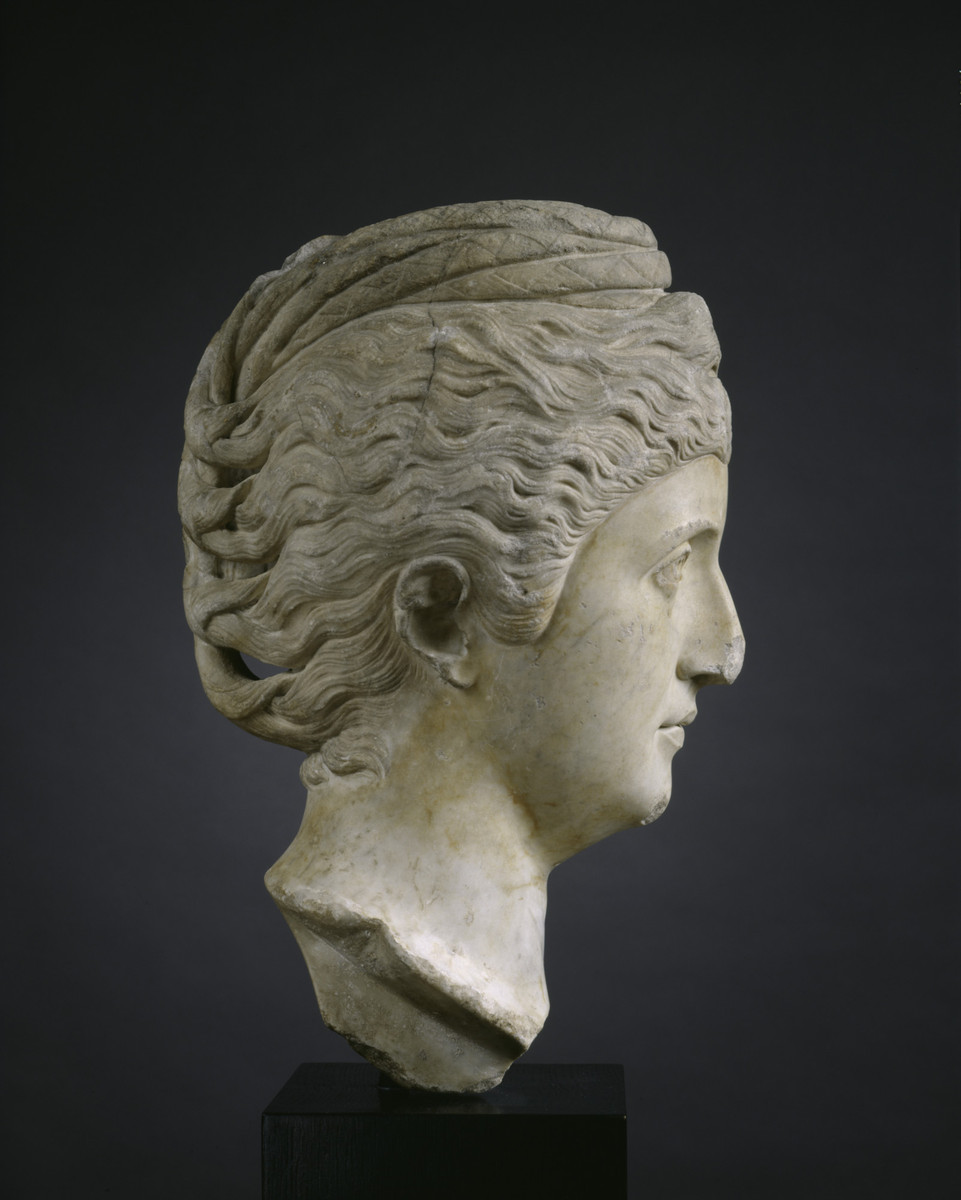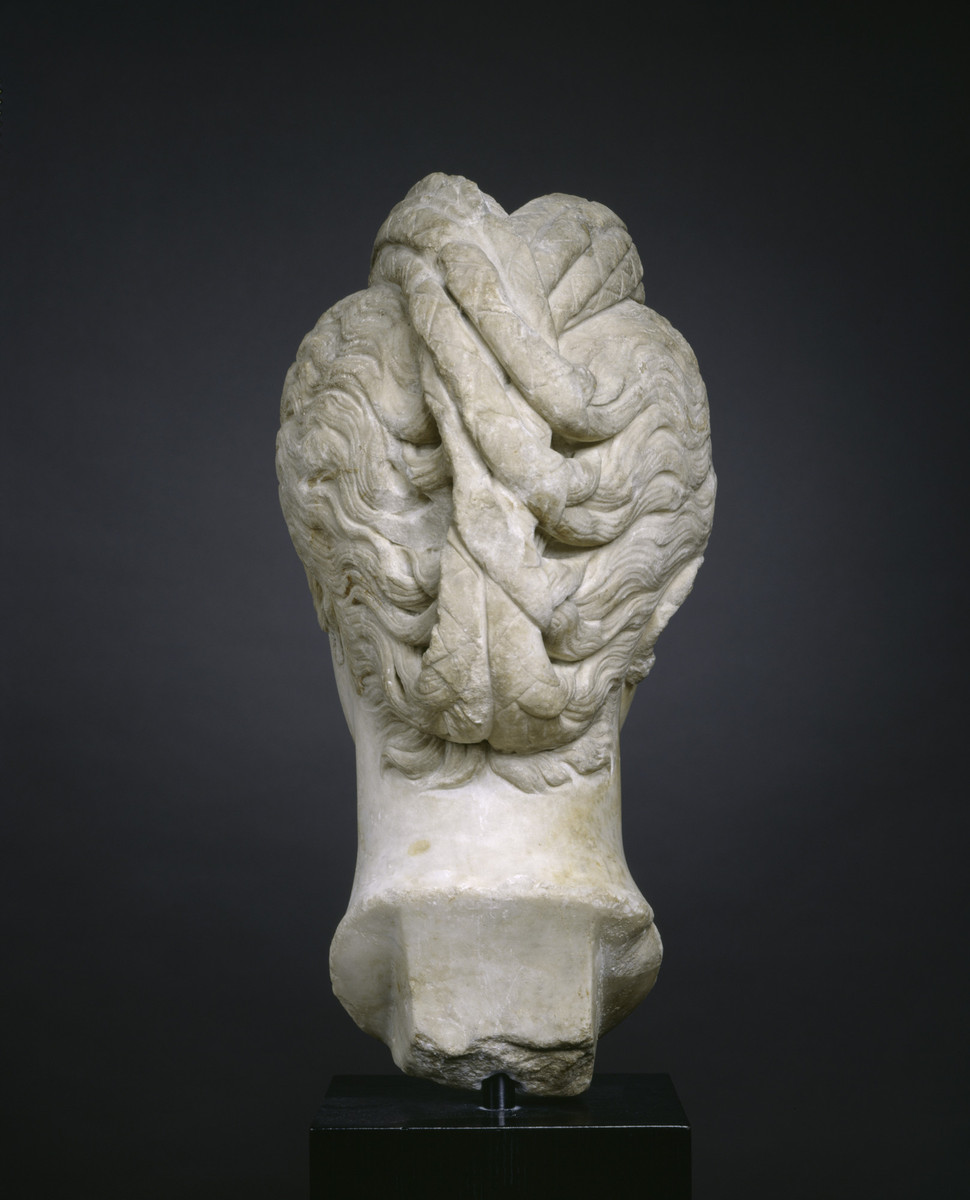On View
Unknown
Roman; Imperial
Place made: Europe; Italy; Lazio; Rome
Portrait of Faustina the Elder, second half of the 2nd century CE
Overall: 17 1/8 in x 7 3/4 in x 9 3/4 in; 43.5 cm x 19.7 cm x 24.8 cm; Base: 7 1/4 in x 6 in x 6 in; 18.4 cm x 15.2 cm x 15.2 cm
Purchase with the Art Acquisition Endowment Fund, Marian Hayes (Class of 1925) Art Purchase Fund, Susan and Bernard Schilling (Susan Eisenhart, Class of 1932) Fund, Warbeke Art Museum Fund, Abbie Bosworth Williams (Class of 1927) Fund
MH 1997.15

 GIVE
GIVE


